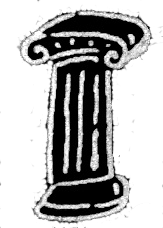The Genius of Children
The Parkland high school children, leaders of the MarchForOurLives movement are exemplars of the many children who, having suffered some catastrophe, performed spectacularly heroic deeds. Like the Parkland students they then went forth to help save many others. Now the internet and social media are empowering today’s children (as in the many resist movements) to move beyond boundaries that might have silenced them.During my two children's years at the School of American Ballet I became familiar with two young ballet prodigies: Katherine Healy and Peter Boal. At age ten Katherine performed in Superskates, choreographed by Olympic champion skater John Curry, who described her performance as "the most exciting experience of my life." She went on to become a world-class professional ballet dancer and later returned to professional skating, coaching and teaching. Peter Boal, who is now the artistic director of the Northwest Pacific Ballet, was already a stunning virtuoso in a student workshop performance at age twelve. He became a principal dancer in the New York City Ballet.
Such child prodigies, which must include Mozart, Ann Frank and Louis Braille (among many) demonstrate the special endowment that potentially endow all children, some called forth under special circumstances such as their school shootings.What is special about children, even seemingly children of average intelligence and average creative talent?
That mystery lies in the brain development process that is typically viewed as immature and, correlatively, to some degree incapable. In a New York Times article about a contemporary musical prodigy, Matthew Aucoin, his parents related an example of his amazing genius: at age eleven he sat down at a piano and played the entire score of Mozart’s The Marriage of Figaro without having ever seen the score. That is an outstanding example of a capacity shared by all children: the lack of inhibition about making an attempt, of following an impulse to adventure, of conceiving something new, of simple daring.Child heroes abound. Google will pull out at least twenty-five examples of children like Iqbal Masih. At age four he was bound to work, chained for twelve hours seven days a week, to payoff a family debt. At age ten he escaped, attended a school for former child bonded slaves and ultimately helped free 3,000 child slaves. Interviewed in other countries, he was shot and killed at age twelve on his return from the U.S.
Like the Parkland students Emma González, David Hogg and Cameron Kasky, among others, Iqbal took his own experience and, with the level of courage only a child could muster, brought that experience to protect and save others. Iqbal would accept nor endure obstacles that might have stopped adults. These children face risks that would deter most adults. Their fierce humanitarian drive is unbounded, untrammeled by doubts, fears, self- or social consciousnesses, the shame of failure—the qualities that inhibit and hold back adults.We can remember that childhood seemed a time of freedom. Even Iqbal, lashed to work from as early as he could remember, somehow had a child’s awareness of the possibility of freedom, of spontaneity, of action without much consequence.And what must have sustained Iqbal in his efforts to free other child slaves is what provides the Parkland students with the drive to demand and obtain gun control: the sense of success. Again, only children can look forward to success without undercutting it with the adult’s uncertainty.
In Mrch I wrote a postmarchforourlives fjund-raising, consider a donationhttps://marchforourlives.com/donate/Iqbal Masih

